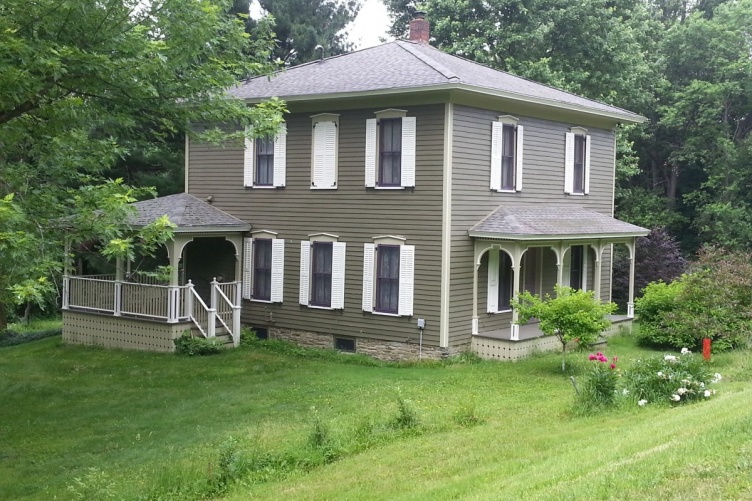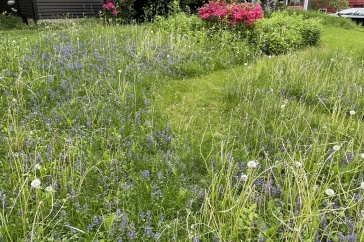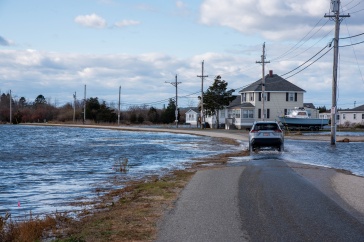
Lawns have long played a role in neighborhood status and appealing to prospective buyers. But they can also be an important piece of the ecological picture when it comes to carbon storage — the prevention of releasing carbon into the atmosphere that can increase global warming. Researchers at UNH found that when looking more closely at carbon storage in the soil of urban homes, the older the home, the more carbon stored underground.
“People may not think the small ecosystem around their home, the grass, soil and vegetation, is providing a service to society,” said Alexandra Contosta, research assistant professor at UNH’s Earth Systems Research Center. “But the key to meaningful ecological carbon storage may be as close as their own backyard.”
“The key to meaningful ecological carbon storage may be as close as their own backyard.”
For their study, recently published in the journal Landscape and Urban Planning, researchers from UNH and the U.S. Forest Service went digging for answers in yards of city dwellers. Because urban areas are important for understanding the global carbon cycle that can affect climate change, they wanted to see whether they could detect patterns of carbon storage within people’s yards. They focused on lawns in a smaller city (Manchester, New Hampshire) and included a suite of variables such as housing age, population density, income, home value, percentage of married couples and how long residents had lived in the house. They found the largest contributing factor when it came to higher carbon storage underground was the age of the house.
“We were surprised that socioeconomic traits didn’t play a larger role,” said Contosta. “The only thing that seemed to matter was time.”
In contrast, carbon storage above ground by trees was more related to income, lifestyle, residents’ age and marital status, with housing age playing a secondary role. Housing age seemed to matter more when the tree was under 50 years of age. After that, trees on lawns with older houses tended to store less carbon. Such gardening practices as tree trimming, tree removal and even tree planting may have also played a role.
“What it showed us is that one size does not fit all,” said Contosta. “And, when it comes to individuals interested in doing their part by helping to increase carbon storage in their own yard, there may be more than one option.”
The researchers say understanding the nuances of carbon storage in city lawns is critical for urban planning, policy making and management. It highlights the need for a variety of approaches tailored to protecting and enhancing urban carbon storage and minimizing carbon loss.
This study was supported by the National Aeronautics and Space Administration (NASA) Carbon Cycle Science Program.
The Institute for the Study of Earth, Oceans, and Space (EOS) is UNH’s largest research enterprise, comprising six centers with a focus on interdisciplinary, high-impact research on Earth and climate systems, space science, the marine environment, seafloor mapping, and environmental acoustics. With more than $43 million in external funding secured annually, EOS fosters an intellectual and scientific environment that advances visionary scholarship and leadership in world-class research and graduate education.
-
Written By:
Robbin Ray ’82 | UNH Marketing | robbin.ray@unh.edu | 603-862-4864



















































